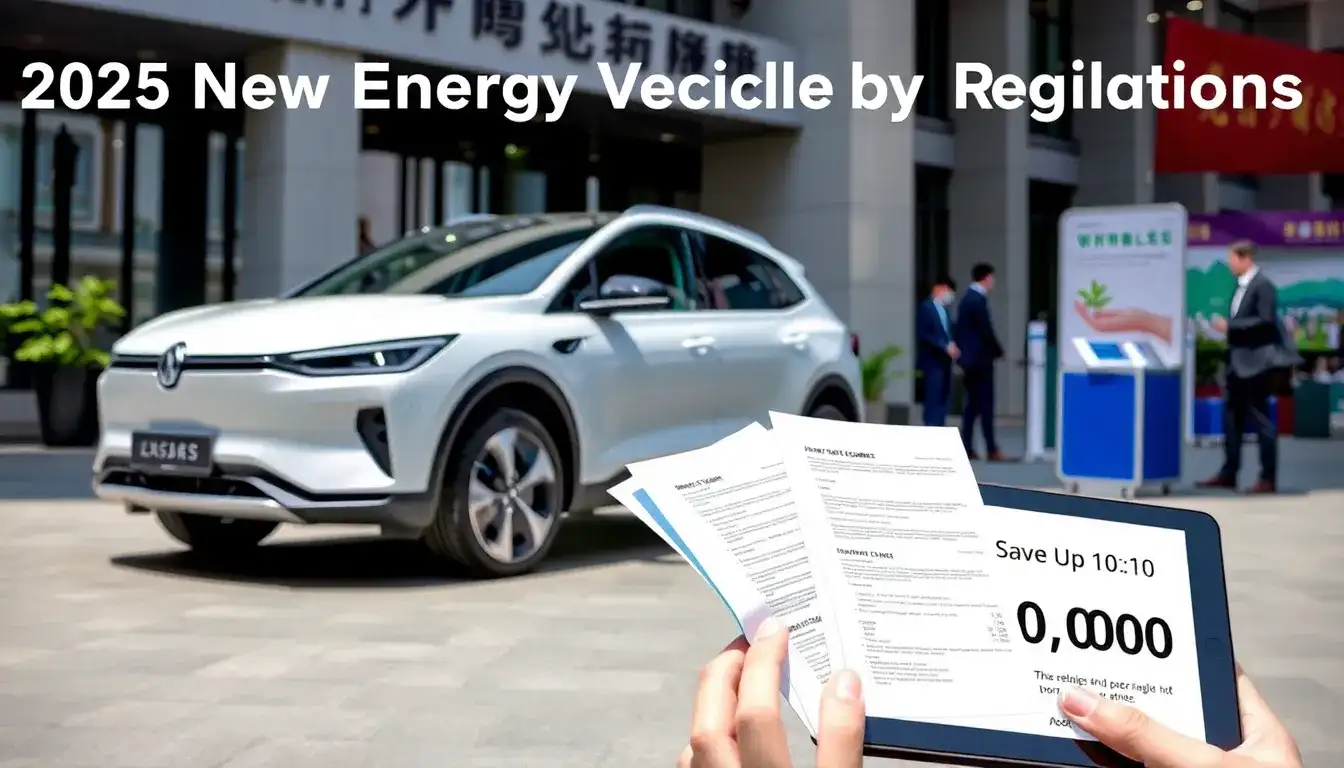
2025 New Energy Vehicle Subsidy Regulations: Save Up to 40,000, Complete Guide to Application Conditions and Avoiding Pitfalls
The 2025 new energy vehicle subsidy policy has undergone several adjustments, providing consumers with broader coverage and more flexible application methods. This article will interpret the types of subsidies, application conditions, amount standards, and key considerations, helping car buyers grasp the essential points of the policy.
1. Types of Subsidies and Coverage
The 2025 subsidy policy is mainly divided into two categories: “National Subsidy” and “Local Subsidy.”
1. National Subsidy (Scrapping and Replacement Subsidy)
This subsidy is aimed at consumers who purchase new vehicles after scrapping old ones. The old vehicle must be registered under the individual’s name and meet the following criteria:
- Gasoline vehicles: Registered before June 30, 2012;
- Diesel vehicles: Registered before June 30, 2014;
- New energy vehicles: Registered before December 31, 2018.
A flat subsidy of 20,000 yuan is provided for purchasing a new energy vehicle after scrapping the old one, while a subsidy of 15,000 yuan is offered for purchasing a fuel vehicle (with engine displacement of 2.0L or less).
2. Local Subsidy (Replacement Subsidy)
This applies to consumers who transfer old vehicles and purchase new ones. The old vehicle must be registered in the individual’s name before January 8, 2025 (inclusive), and the new vehicle must also be registered under the same name. The subsidy amount varies based on the invoice price of the new vehicle:
- New energy vehicles: 5,000 yuan for vehicles priced between 40,000 and 70,000 yuan, 9,000 yuan for those priced between 70,000 and 150,000 yuan, 13,000 yuan for those priced between 150,000 and 250,000 yuan, and 15,000 yuan for vehicles priced above 250,000 yuan;
- Fuel vehicles: The tiered standards are similar to those for new energy vehicles, but the amounts are slightly lower.
It is important to note that the national and local subsidies cannot be applied for simultaneously; applicants must choose one based on their circumstances.
2. Application Conditions and Required Materials
Whether for the scrapping subsidy or the replacement subsidy, the following core conditions must be met:
- Vehicle ownership: Both the old and new vehicles must be registered under the applicant’s name, and both vehicles must belong to the same individual;
- Timeliness: The old vehicle must be registered or transferred before the policy’s stipulated date;
- Company qualifications: The new car dealership must be listed on the government’s published list of subsidy-eligible dealerships.
Required application materials include:
- ID card of the applicant;
- Sales invoice and registration certificate of the old vehicle (for replacement subsidy) or scrapping and cancellation proof (for scrapping subsidy);
- Sales invoice and registration certificate of the new vehicle;
- Bank card for receiving payments.
3. Policy Highlights and Adjustments
- Relaxation of Restrictions: The scrapping scope has been expanded to include National IV emission standard fuel vehicles and those older than ten years.
- Removal of Regional Limits: Subsidies can be applied for cross-province purchases and out-of-area scrapping.
- Adjustment of Displacement Restrictions: The 2.0L displacement limit for fuel vehicles has been removed, and pickup trucks are now included in the subsidy.
- New Car Purchase Subsidy: First-time car buyers (without any vehicle registered in their name) purchasing a new energy vehicle can receive a subsidy of 10% (for vehicles under 150,000 yuan), 8% (for vehicles between 150,000 and 300,000 yuan), or 6% (for vehicles above 300,000 yuan), with a maximum subsidy of 40,000 yuan.
- Additional Subsidy Opportunities: In addition to the national and local subsidies, some platforms (like Dongchedi) offer extra subsidies ranging from 1,000 to 20,000 yuan, which do not conflict with policy subsidies and must be applied for before picking up the vehicle.
4. Key Considerations
- Time Sensitivity: The scrapping subsidy must be completed by February 28, 2025, while the replacement subsidy application must be submitted by January 10, 2026.
- Verification of Company Qualifications: Before purchasing, confirm whether the dealer is included in the government’s list of subsidy-eligible companies to avoid application issues.
- Avoiding Violations: It is strictly prohibited to forge old vehicle transfer or scrapping records; each individual is limited to one application for scrapping and one for replacement subsidy within the same calendar year.
5. Regional Differentiated Policies
Some provinces have introduced additional incentive measures:
- Sichuan Province: Removes restrictions on registering new vehicles under Sichuan plates; subsidies for new energy vehicles are tiered based on selling price (11,000 – 17,000 yuan).
- Shenzhen City: Provides tiered subsidies for purchasing new energy vehicles based on the purchase price (up to 11,000 yuan).
- Shandong Province: Offers a maximum replacement subsidy of 12,000 yuan for fuel vehicles and 15,000 yuan for new energy vehicles.
The 2025 new energy vehicle subsidy policy offers substantial support to consumers through expanded coverage, simplified processes, and increased subsidy amounts. Buyers should carefully assess their vehicle conditions, budget, and local policies to choose the appropriate subsidy type and prepare the required materials accordingly. It is advisable to consult local business departments or authorized dealers in advance to ensure a smooth experience in benefiting from the policy.







